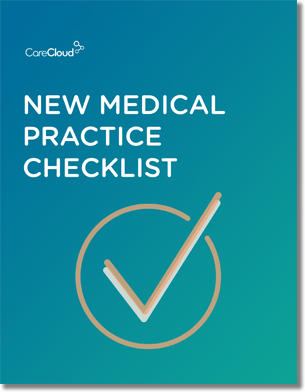Using social media for your practice without first setting a social media strategy is a bit like building a house without a set of blueprints. It can be done, but you’ll run into problems down the road.
For instance, you may later realize you’re wasting valuable time posting random content that makes no impact, or it could be something worse, like committing a social media gaffe that stains the image of your practice. So, before jumping head first into social media, lay a sturdy foundation with these five steps to form a social media strategy.
1) Create a Social Media Mission Statement
Before doing any sort of tweeting or liking, figuring out the purpose behind your social media strategy is vital. Many practices get into social media for marketing purposes, but there are other viable reasons for engaging in social media.
A mission statement serves as your compass in the social media sea. The sites you have a presence on and the content you post should be determined by the purpose specified in the mission statement. A mission statement not only focuses on the strategy but also gives you something against which to measure your efforts..
2) Conduct Competitive Research
According to QuantiaMD, 67% of doctors use social media professionally. Yes, that means adopting social media won’t instantly set your practice apart. But it also means there are many other practices out there showing you what works and what doesn’t.
Most social media sites won’t allow you to view other profiles unless you join, so use a personal account or ghost user that can be deleted later. Once that’s done, check to see what kind of posts garner the most interaction and what media are working best for your competition.
3) Determine Where to Establish a Presence
After the first two steps have been completed, you should know enough to choose what site(s) to establish a presence on.
Facebook is always an option because of its overwhelming popularity. If your patients and community are using a social media site, it’s likely Facebook. Twitter is a solid number two that allows you to reach out directly to others; something a Facebook business page does not permit.
Of course, it’s not always about reaching out to current and potential patients. Maybe you just want to use social media to better the practice. Then a site like QuantiaMD, one of the more renowned online physician communities, would be best. These allow you to share knowledge and gain insight from other physicians.
4) Appoint a Social Media Specialist
Notice, it does not say hire a social media specialist. Depending on your social media ambitions, the social media strategy can probably be carried out by one or two current employees. Unless you’re planning on doing it yourself, that is.
Ideally, these specialists will use the chosen medium in their personal lives. This makes the transition to using it for the practice smoother. Also, your specialist must be someone who will embrace the opportunity and make time for it. The only thing worse than no social media page is a neglected social media page.
5) Decide on an Identity
A solid social media identity will set your practice apart from the rest. Do you want your practice to be the authority on health in the community? Or will your practice provide helpful information with a humorous twist? These are the type of questions you need to ask yourself.
Much of your practice’s social media identity depends on the particular site you establish a presence on. For instance, if you’re using LinkedIn, humor doesn’t usually go off well. Facebook, however, makes it fine to inject humor occasionally.
Now, it’s time to go execute. The key from here is time and diligence. Having a sound social media strategy will make it easier to attain whatever it is you are looking to gain by using social media for your practice.
If you want more articles that help with your practice’s social media strategy, check out our Physician’s Guide to Marketing.

Do you know what you need when setting up a new medical practice?



